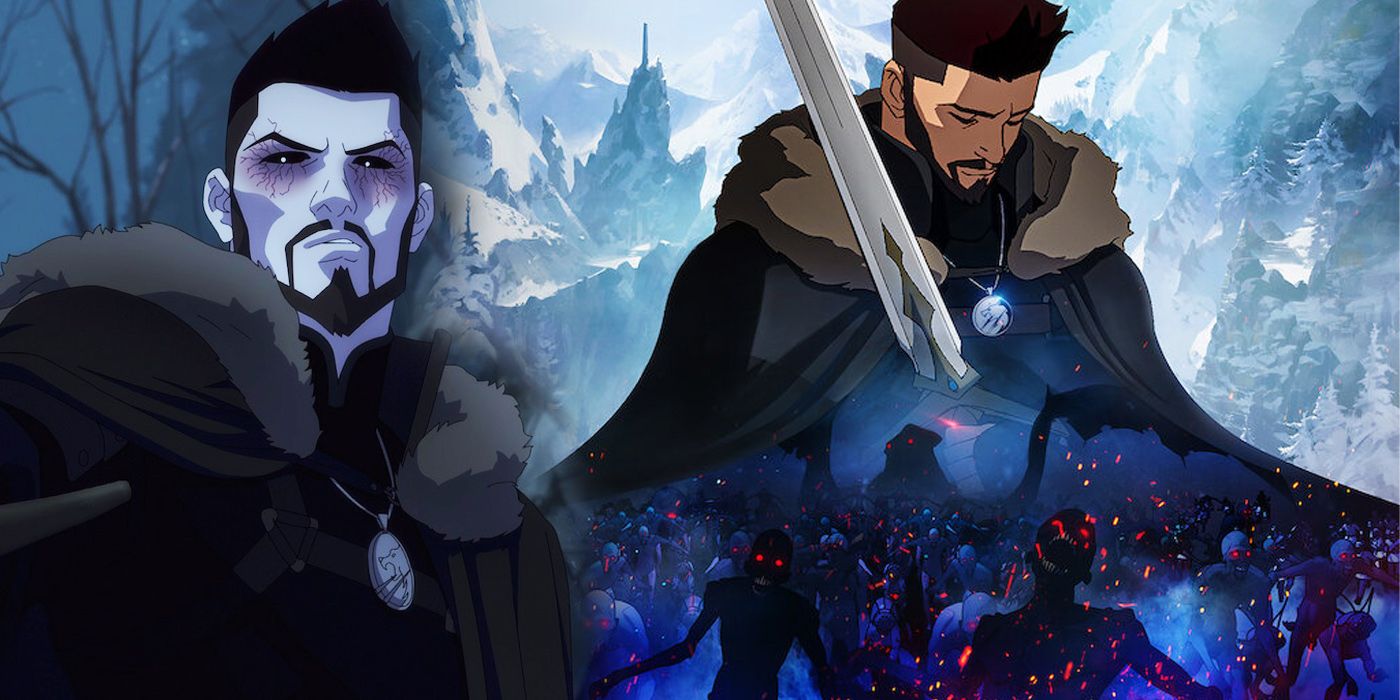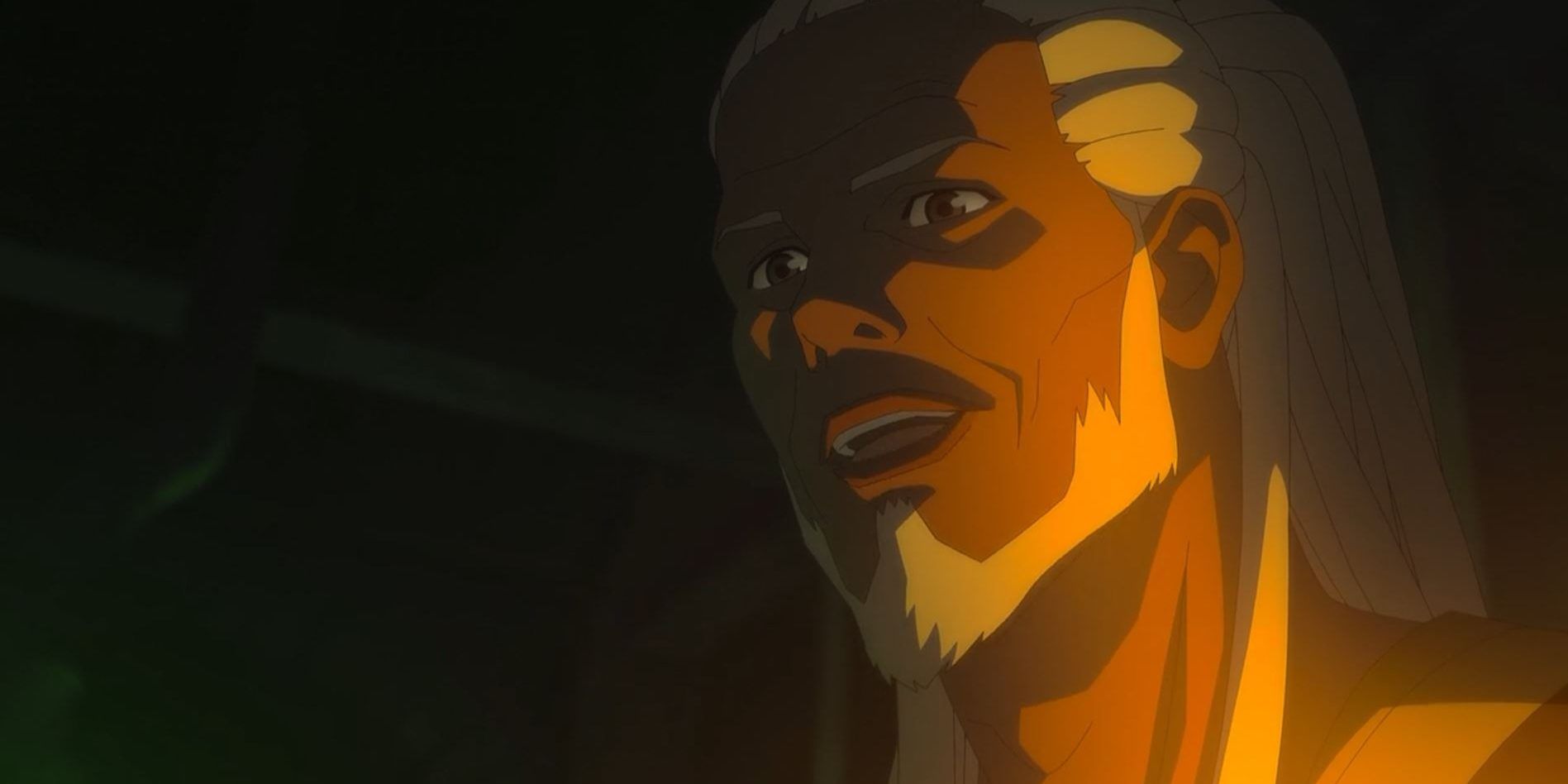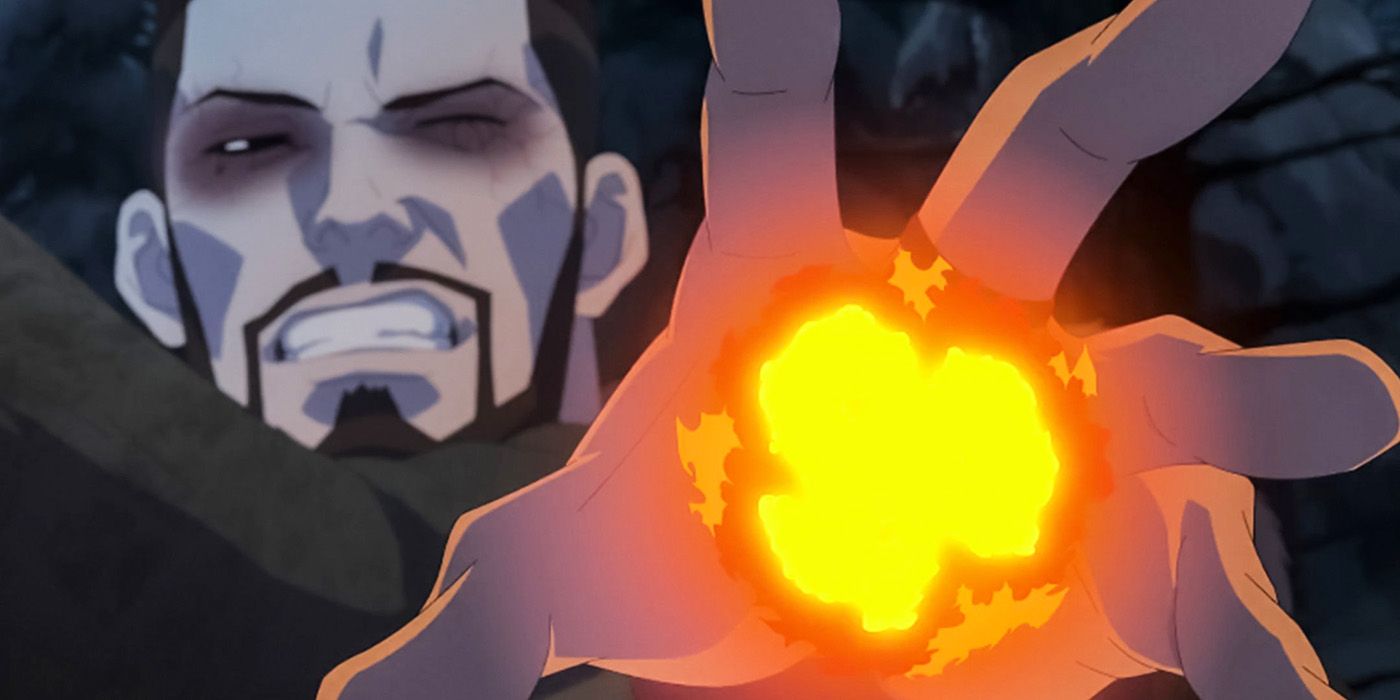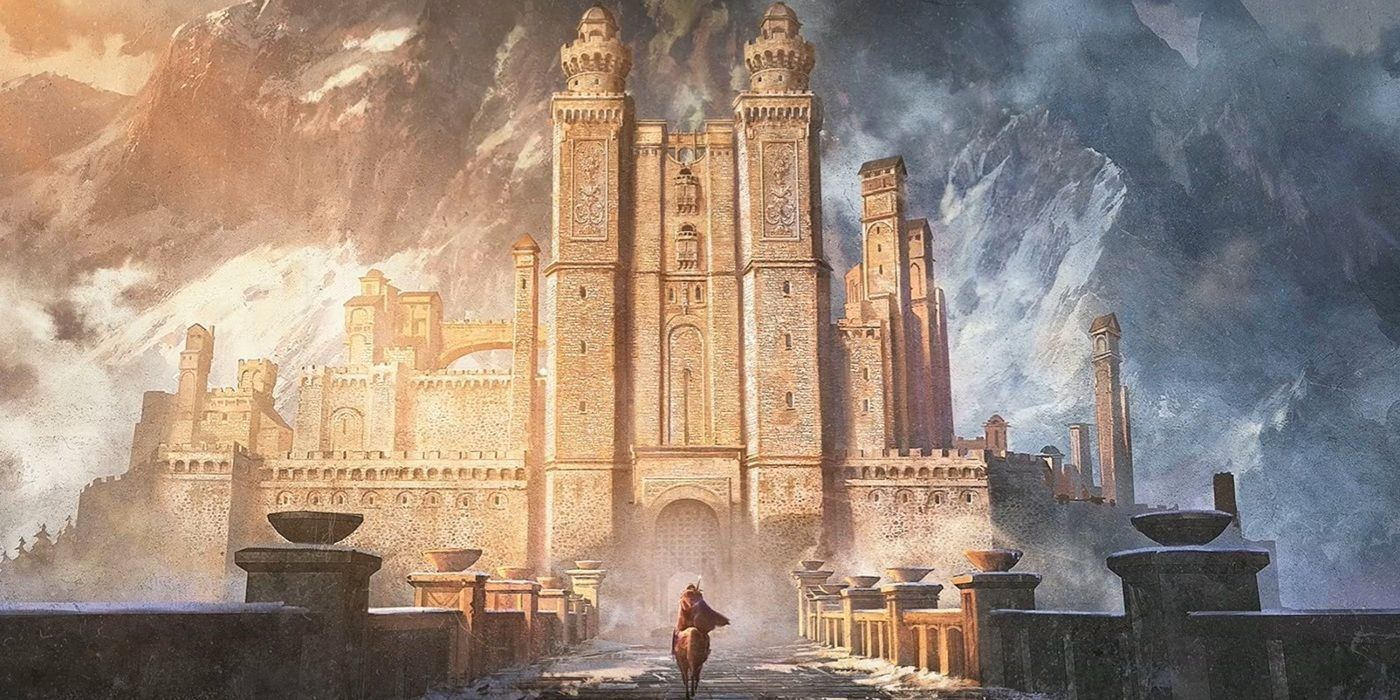
Warning: Spoilers for Witcher: Nightmare Of The Wolf.
The animated movie The Witcher: Nightmare of the Wolf broadens the world of Netflix's The Witcher series and contains several key reveals about the history of the witchers and their world. The movie focuses on the history of Vesimir, who acts as a mentor to Geralt of Rivia and other witchers depicted in the live-action series. Nightmare of the Wolf also depicts a moment of crisis for the witchers that has long-term ramifications.
The Witcher franchise began with a series of novels by Andrzej Sapkowski, but is perhaps best known for the video game adaptations made by CD Projekt Red. A live-action adaptation began on Netflix in 2019 with Henry Cavill as the protagonist Geralt of Rivia, with a second season on the way. Nightmare of the Wolf explores a period of time before The Witcher Netflix show takes place. The bulk of the movie takes place in 1165, approximately 75 years before the beginning of the TV series. Because witchers live longer than ordinary humans, Geralt appears as a child in Nightmare of the Wolf and an adult in the next century. The movie also contains flashbacks to Vesemir's childhood decades earlier.
The story of Nightmare of the Wolf details a conflict between the witchers of Kaer Morhen and a nearby city, aggravated by a mutant elf who is wreaking havoc in the woods. The movie's conclusion shows how this incident and Vesemir's actions have irrevocable consequences for the witchers. In a sense, the whole movie is crucial witcher history, but here are the most important revelations and historical information.

The purpose of witchers is a major theme and topic in Nightmare of the Witch, and the movie helps shed light on why the mutant monster hunters were created in the first place. Vesemir learns from the mage Reidrich that the witchers were created to help drive out the "old races", including elves and other types of magical humans. While they were also intended to kill monsters, the witchers helped humans rise to power. This is depicted in the movie through the returning character of Filvandrel, who is desperate to keep what remains of the elves alive. Witchers were first created in 967, approximately 150 years before this conversation, so given Reidrich's age his account is only a few generations removed from the order's origins.
This backstory is also important to the themes of Nightmare of the Wolf. It introduces the concept of "monsters to fight monsters", repeated several times by various characters. Because the witchers were created to suppress magical beings, and cannot return to normal life, the success of their mission imperils their future. Geralt has monsters to fight, but in Vesemir's time the future of the witchers seems uncertain, leading to the Nightmare of the Wolf's core conflict.

The veteran witcher Vesemir is a familiar character to those who have read the books or played the games, and Nightmare of the Wolf provides a lot more information on his life. The movie reveals that Vesemir grew up as a servant boy. When the witcher Deglan was hired to help rid his lady of an evil spirit, Vesemir was inspired and followed the witcher back to Kaer Morhen to be trained. This involved leaving behind his young love Illyana, who grows up to become the noble Lady Zerbst. The film also includes a depiction of Vesemir's witcher training, a brutal process in which he and his classmates are thrown to the proverbial wolves in a swamp with few expected to survive. Vesemir becomes a powerful witcher, but at a high cost. Nightmare of the Wolf provides a depiction of Kaer Morhen at the height of its power and the problems that its success caused for the surrounding area.
While having more resources at his disposal, Vesemir faced many of the same struggles as Geralt, having to fend off the distrust of the populace as well as mysterious monsters. By the time he is an adult, he has become jaded about the world, leaving an orphaned boy to fend for himself in Nightmare of the Wolf's opening scene and maintaining a testy relationship with other witchers such as Luka. The movie captures the origins of the witchers through Vesemir, showing how the order operated before catastrophe struck.

The final act of The Witcher: Nightmare of the Wolf shows an event that shapes the history of the witchers. The people of the nearby city, led by the mage Petra Gilcrest, sack Kaer Morhen and burn it to the ground. While Gilcrest had been looking for a pretext to attack the witchers, the attack became inevitable when she discovered proof of what she had long hypothesized: that the witchers were creating monster hybrids of their own to help drive up demand for their services. The hybrid monsters were created by only one witcher, Deglen, but the whole order pays the price. Most of the witchers present are killed, but Vesemir escapes with a quartet of trainees, including a young Geralt of Rivia. He promises to raise them in the way of witchers, but with Reidrich's death the knowledge of the alchemical procedure used to turn people into witchers is lost, meaning that they will be the last generation.
RELATED: Everything We Know About The Witcher: Nightmare Of The Wolf 2
The events of The Witcher: Nightmare of the Wolf reveal the history leading up to the dark world depicted in the main story of The Witcher, where Kaer Morhen is in ruins and Geralt is one of just a few witchers roaming a broken world. The Netflix movie shows how the so-called "Golden Age of Witchers" ended, and how the School of the Wolf to which Geralt and Vesemir belong fell into disrepair. In this way, Nightmare of the Wolf sets the stage for Geralt's adventures in the main The Witcher series.
from ScreenRant - Feed https://ift.tt/3kAEj8T



0 Comments